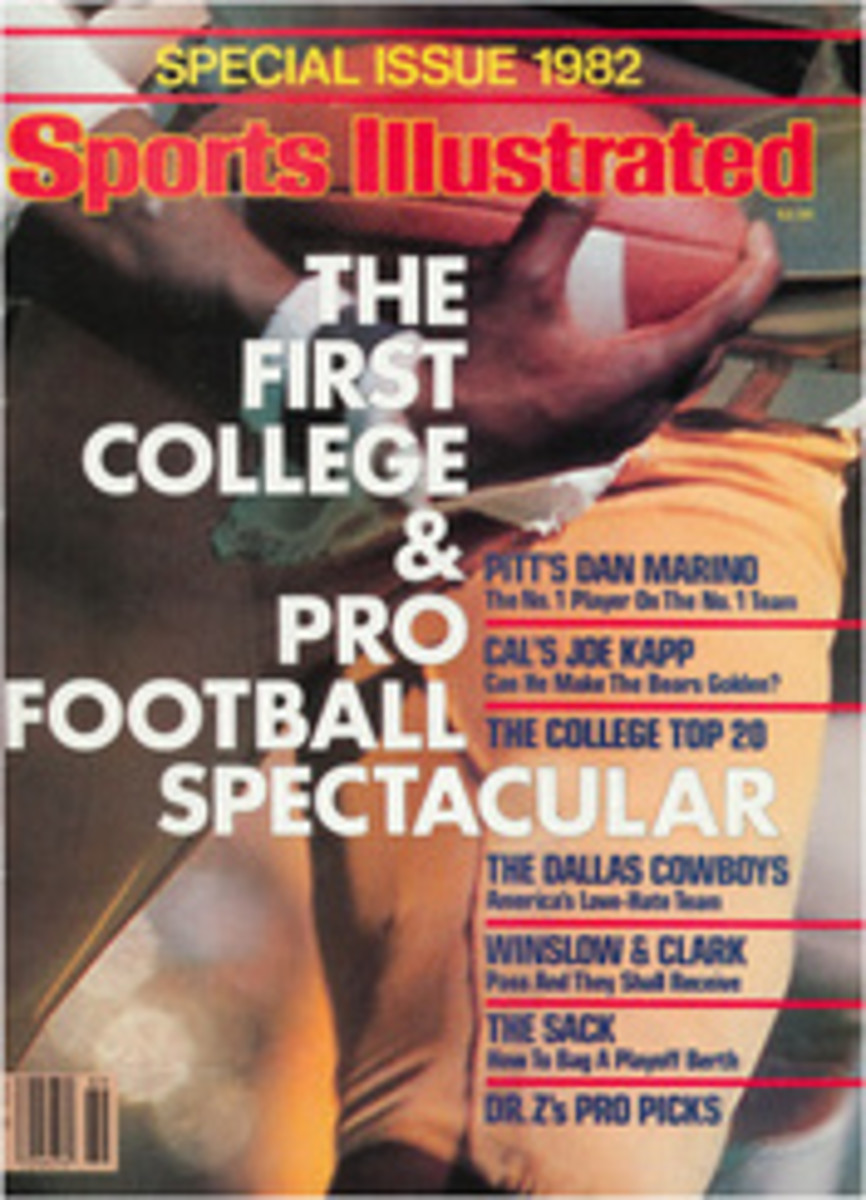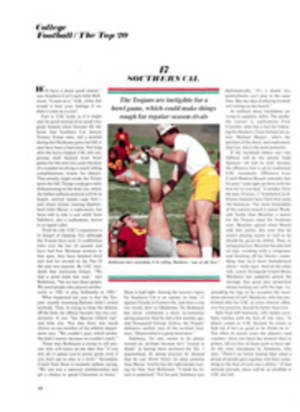
A KID'S DREAM, BEING A PRO FOOTBALL WATER BOY, WAS ONE LAD'S NIGHTMARE
The football hovered briefly in the muggy South Buffalo air and then began its end-over-end descent on the scrawny target on the street below. The target—me—regarded the pigskin as if it were a mortar shell heading for a point directly between my terror-filled, 10-year-old eyes. I stood frozen as the projectile fell. I couldn't catch a football to save my life. The ball slammed into the street behind me with a muffled whump. It left a tiny pockmark in the summer-softened asphalt and a gaping hole in the tattered fabric of my self-respect. From that moment on, I knew I'd never have a really satisfying relationship with a football. Yet, in the summer of 1966, when I was 16, I was drafted by the Buffalo Bills.
My father was vice-president in charge of public relations for the team, and it was he who had obtained for me the equivalent of a two-month, no-cut contract as a water boy at the Bills' summer training camp. I didn't know much about pro ball, but I knew a water boy's duties involved more than water. I'd have to help clean the locker room, lay down miles of yard line and drive brokenhearted rookies to the airport. Another of my chores would be to catch footballs—lots of footballs.
I told my father he was making a big mistake. Why give the job to me, the only 16-year-old within 100 miles who didn't want it? He insisted, and I arrived at camp in Blasdell, N.Y., encumbered by a sense of despair as heavy and palpable as a tackling dummy.
Passing drills were the worst. A quarterback would take one of about half a dozen balls and sling it to a receiver downfield. Within a few moments, a second receiver was off and reaching for a second ball. As a receiver trotted back to the line of scrimmage, he'd throw the ball to me. I was to catch the ball and add it to my small backlog, which I was then supposed to flip one at a time to the quarterback as he needed them. For most rookie players, this procedure was about as difficult a task as eating lunch. For me, it was a return to the war zone of my youth.
Picture the scene. The quarterback has just thrown three bombs to three streaking receivers. They've made their grabs and are on their way back to the line. En route, two of them simultaneously launch high-flying bombs at me from about 40 yards out. While I'm deciding which one of the incoming missiles to avoid, the third guy ambles within 10 yards of me and looses an underhand bullet at my rib cage. "Yo!" he calls, which I later discovered is receiver talk for "Watch your ass, kid." Off to the left, the quarterback has exhausted his supply of footballs and frowns in my direction. "Hey," he says, which turned out to be quarterback language for "Where the hell are the balls, kid?" Meanwhile, bombs one and two are about to land. I decide to go for the bullet, which shoots painfully through my hands while the two bombs bounce on either side of me. The crowd of several hundred fans on hand sends up a sarcastic cheer. I feel like dying, but I hear some Southern-fried voice shout "Yo" in my direction, and the nightmare starts all over again.
And so it went for the first several weeks of practice. Kids my own age would see me out on the field with heroes like Jack Kemp, Daryl Lamonica, Billy Shaw, Butch Byrd, George Saimes and Tom Sestak. They must have wondered how such a gawky, bespectacled person had ever qualified to run with these superior beings. They knew they could do better, and they were right.
But, gradually, I realized I was getting better. Incredibly, I'd become the squad's best "rebounder." I still couldn't catch airborne footballs, but I'd learned how to snare a bouncing ball on a single hop. It got so that I developed a sixth sense for anticipating how the damn things would bounce, before they landed. This saved me a lot of running around and allowed me to keep the ammo flowing to the quarterbacks.
After a while it dawned on me that the rebounder's skills are unacknowledged in football. I had just decided to elevate rebounding footballs into an art form, when I tried to field a pitchout with my solar plexus. Everything suddenly went blue. I don't remember hitting the ground. I opened my eyes to see a very frightened rookie halfback, whose "Yo" I hadn't heard, imploring me to snap out of it. He giggled with relief when I got to my feet. The crowd, amused all summer by my inept cavorting, cheered when I stood up and trotted to the sidelines.
So it had finally happened. I'd been nailed in the gut and had lived to talk about it. I felt weirdly triumphant. I'd experienced football satori. I saw the pigskins for the airbags they really were. Dizzy with new insights, I realized it wasn't too late to overcome my fear of football and become an athlete rather than a target. No longer would I dodge footballs. Starting the next day, I'd catch them and gain a measure of honor.
It's amazing what a little oxygen deprivation can do to obliterate a person's sense of reality. The next morning I got murdered on the field. I was still a klutz. Every time I took a breath, my aching gut reminded me that those bags of air had rock-hard points that hurt like hell. I played dodgeball that afternoon and for the duration of the summer.
These days, I like to watch the Bills play, now that they've recovered from their long decade of decline that began the year I joined the team. But I still avoid the company of footballs. I know we'll never get along.
ILLUSTRATION
ANDY MYER

